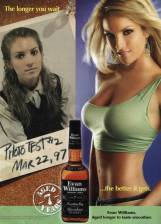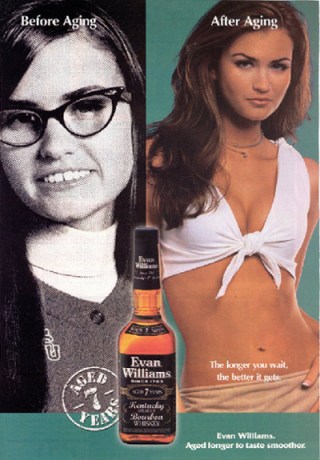“Criticism may not be agreeable, but it is necessary. It fulfills the same function as pain in the human body. It calls attention to an unhealthy state of things.”
-Winston Churchill
We are innovators, we are explorers, we are originators. We are creators. The world is brimming with infinite information; through paintings, through songs, through words, this information is depicted from billions of different perspectives. No two people are the same; therefore their expression of the same idea will never be articulated identically. In order to develop a multiperspectival view of the world, it is essential to gain insight from the work of others, and absorb their knowledge into your own. Even the most talented artists, musicians, and journalists seek inspiration from their peers, and offer their own stimulation in return.
In journalism, news, opinions, and information about the world come from many different points of view. Understanding issues through the minds of other people allows you to approach topics with a well-rounded view. On another level, the simple act of reading other people’s writings, noting their strengths and weaknesses, gives you the ability to hone your own writing skills. The attention to thoughts and words prevents an overall stagnancy that can develop in uninspired writing.
Through reading the blogs written by my peers, I was granted the opportunity to see a variety of approaches to the same topic that I had written about in my blog. Each blog had incredibly strong points, in addition to aspects that I would elaborate on or phrase in a different way.
————————————————————————————————————
“Disney- Is it as Magical as We Think?”
– Arielle Barry
I found this post to be immediately successful in terms of interaction with the reader. Your friendly tone and questions such as, “how do you feel?” effectively maintain the attention of the reader, while provoking them to think at the same time. In the same vein, when you describe how Disney movies make you feel, you reveals something personal; this is a brief moment of intimacy with the reader.
 You transition neatly into Disney through the perspective of an adult, and I really enjoyed your examples of ideologies that a political economist would pick up on. Although I watched Mickey Mouse Monopoly too, I didn’t absorb as much about the barbaric details in Aladdin. It was fascinating to think about the opening song in a completely different manner. Your solid grasp on Consuming Kids was evident through your excellent insight about children living in a culture of consumerism. An especially strong point was that “the consumer market right from birth targets children making them believe in the ideology ‘you are what you have.’”
You transition neatly into Disney through the perspective of an adult, and I really enjoyed your examples of ideologies that a political economist would pick up on. Although I watched Mickey Mouse Monopoly too, I didn’t absorb as much about the barbaric details in Aladdin. It was fascinating to think about the opening song in a completely different manner. Your solid grasp on Consuming Kids was evident through your excellent insight about children living in a culture of consumerism. An especially strong point was that “the consumer market right from birth targets children making them believe in the ideology ‘you are what you have.’”
I would recommend a little more information about political economy and why the political economist would “know straight from the beginning that Disney is portraying Islamic views and religion is a way that is not correct.” This interview with political economist Edward S. Herman, who produced the propaganda model with Noam Chomsky, would be a great article to read and summarize for your readers. This blog post also needs a good proof-read, because minor grammar and spelling mistakes, such as “lets” instead of let’s,” “Disney” instead of “disney,” and “fist” instead of “first,” slightly detracted from the overall fluidness of your blog.
“Picking Apart the Kardashians”
–Dayne Buttafuoco
The first thing I applauded while reading your blog was the way in which you directed readers to your first blog as well. Your enthusiasm for the topic shone through your words, engaging the audience ever more. As a person who is not a fan of the show, “Keeping Up With the Kardashians,” I had never taken the time to consider the signifiers that attract fellow members of society. Your brief background of the family kept a clueless reader in the loop, while providing links to further information on each member of the family; I found those links to be an immeasurable strength.
Through your fluid analysis of the signs in the Kardashian’s Christmas photo, I could really tell that your grasp of semiotics is deep-rooted. You ties the symbols in the photo with information you knew from the show; this is important because it allows us to see the personas that they strive to emulate. Your analysis is detailed, and mentions everything from the fact that, “all of the guys are behind the women,” to the mom of the family, “definitely pulling herself apart from her family as to say, ‘I’m the leader,’” to the arches representing “hierarchy” and “a sense of power.” You point out details that the naked eye would not see upon glancing over, or even studying this picture, and I found myself scrolling back up to the picture after you had made observations that I had missed.
Although your understanding of semiotics is clear through the analysis, I think that  your definition of the term could use a little expansion. A reader who had never heard the word semiotics before wouldn’t necessarily understand the depth to which “production of meaning is constructed through a system of signs.” This website clearly explains the way that signs are produced and how they affect our culture, and would certainly aid you in expanding your definition of the process.
your definition of the term could use a little expansion. A reader who had never heard the word semiotics before wouldn’t necessarily understand the depth to which “production of meaning is constructed through a system of signs.” This website clearly explains the way that signs are produced and how they affect our culture, and would certainly aid you in expanding your definition of the process.
I was also not a huge fan of the headings that you used to separate the blog into sections. I think that rather than “Introduction,” something such as “Meet the Family,” would be more engaging for a reader. “Introduction,” seems too explicit, and is often associated with the beginning of an outline. The headings should also all be formatted as bold, since the ones that are not don’t stand out.
“Breaking Down Breaking Bad”
– Eric Arditti
I was immediately interested in this blog because I am a fan of Breaking Bad as well, and I was interested to learn about the show from a different perspective. Your overview of the background and themes of the show offer just enough information for a reader who has never seen the show, while keeping the summary short and to the point. The fact that you note the ambiguity of the show, by saying, “different people get different meanings from the actions of the characters,” is a strong example for why people should understand the effect of the show’s story through Narrative Criticism.
 Learning about the Aristotelian and Visualist approaches used to create Breaking Bad was unbelievably eye opening. I had never thought about the juxtaposition between Mr. White’s professional language and Jesse’s slang, and how this reflects who their characters are. Nor had I noticed the way different camera angles gave me a different perspective into the actions onscreen.
Learning about the Aristotelian and Visualist approaches used to create Breaking Bad was unbelievably eye opening. I had never thought about the juxtaposition between Mr. White’s professional language and Jesse’s slang, and how this reflects who their characters are. Nor had I noticed the way different camera angles gave me a different perspective into the actions onscreen.
Though you gave a clear explanation of Narrative Criticism, you didn’t offer any further links for readers curious about the approach. This outline would be a great link to provide to readers; the simple structure of the page would enable their understanding without being overwhelmed by a lot of reading. I also wish that you had delved into more depth about why people interpret media in different ways. Although you touch on its arbitrary nature at the beginning and again at the end when you say, “You may have 5 different people watch the same show, but they may have taken that show in 5 different way,” you never goes into any detail about the different points of view that would lead to this ambiguity. For example, discussing how a police officer watching the show differs greatly from a drug dealer watching it. I think adding a few sentences in reference to the factors that influence the audience would add a lot of strength to your blog.
————————————————————————————–
Examining these blogs with a constructively critical eye allowed me to turn that same eye to my blogs. There is a vast difference between turning a paper in to your professor, and posting the paper on a forum that anyone can access; the latter means that the utmost consideration should go into the expression of your thoughts. This is a sliver of your mind that you are sharing with the world, and therefore a heightened awareness of the clarity of your words is vital. By reading the blogs of my peers, I learned how to read my own blogs with fresh eyes, stepping into the shoes of a reader, and tailoring my blog to adhere to the utmost level of understanding. The feedback I gave to them essentially turned into feedback I could apply to my own writings as well, and this fresh inspiration is unparalleled.













